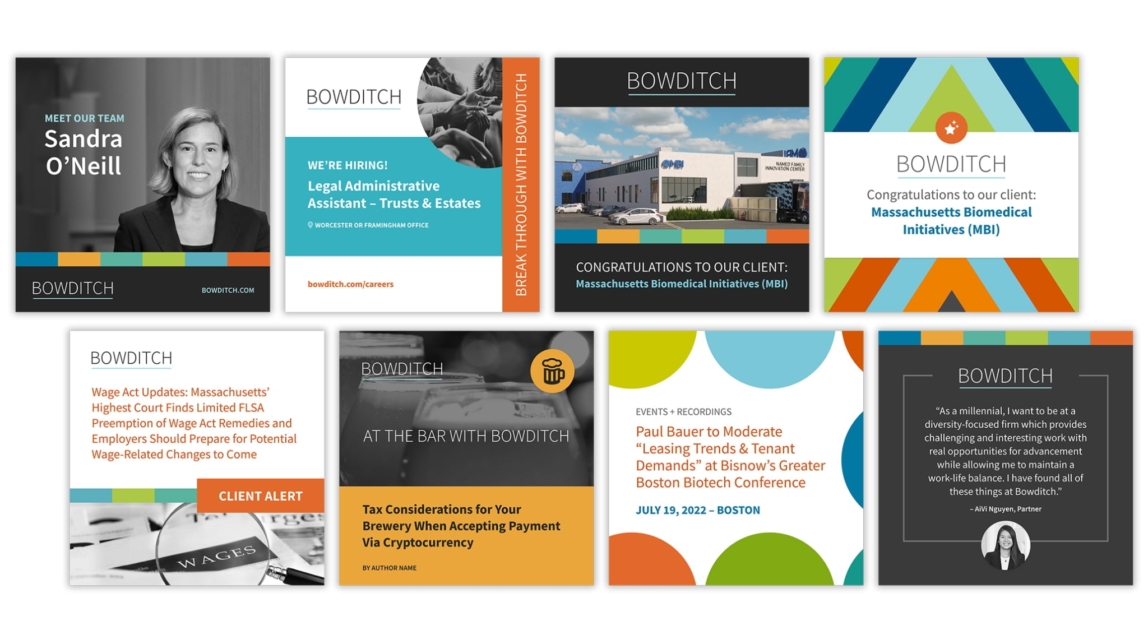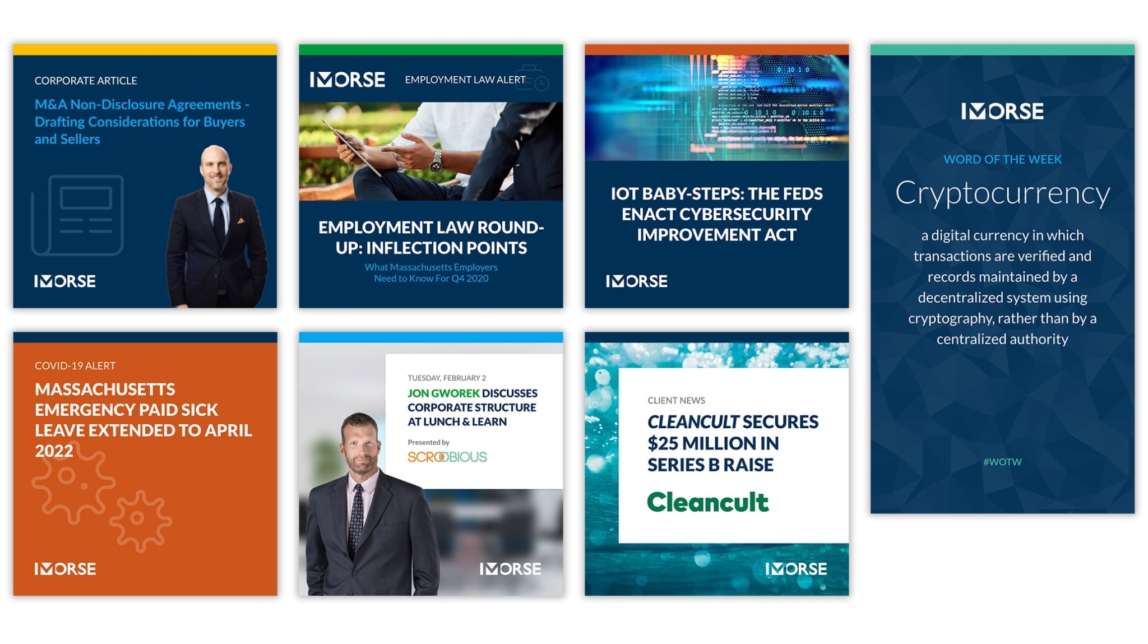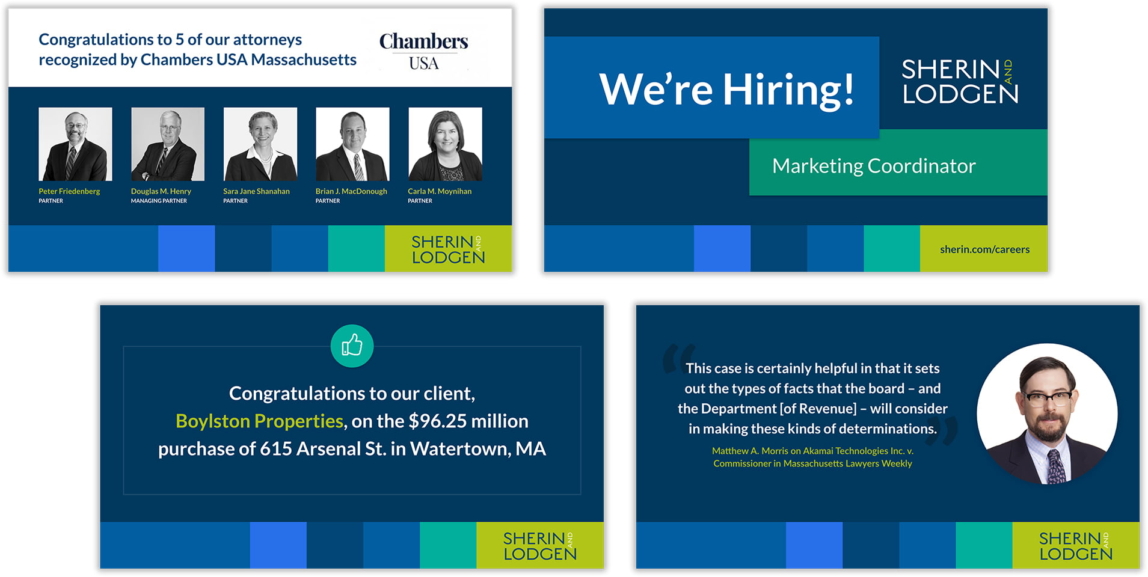
Managing your firm’s social media can be a daunting responsibility with a lot of moving pieces. But by breaking down the process into basic components, you can successfully manage your social media without getting overwhelmed.
1. Set up a content calendar
A content calendar is a social media plan scheduled out over a few weeks or months. It can be housed on a Google calendar or doc or on a project management tool like Slack, Trello, or Asana.
Start by populating your calendar with national holidays, corporate anniversaries, as well as company conferences, and industry events. Then fill in the calendar with a mix of promotional, educational, light-hearted, and thought-provoking content.
Planning ahead will save you time and allow you to prepare quality content instead of posting in an off-the-cuff and reactive manner. At the same time, allow for some flexibility because something unexpected will always come up.
Download a Free Content Calendar Template from HubSpot
2. Create content
Now that you have a framework set up on your content calendar, think about your audiences and what will resonate with them.
Content can be inspired by frequently asked questions or concerns. Your content should be simple, easy to understand, and sharable.
Allow members of your team to contribute. If someone from your firm is attending a conference on behalf of the company, encourage them to live Tweet the conference or share photos to Instagram stories. Key takeaways can be shared as a blog post and/or as several successive social media posts.
3. Create graphics templates
For graphic elements, customize pre-designed templates on a graphic design platform like Canva or create your own templates in Adobe XD or Photoshop. Templates allow you to:
- Create images in a batch, saving you time
- Maintain a consistent look for your brand
- Share the image creation responsibility with someone else
- Move quickly if a certain topic needs to be addressed urgently
Below are some examples of graphic templates we’ve created for our clients:
4. Write engaging captions
Your captions should be brief, well-written (no grammatical or spelling errors), and conversational. They should encourage your audience to engage with you further by clicking a link to read more, by responding to a question that you ask, or by visiting your website for more information on your services.
5. Choose effective hashtags
Hashtags are key to your social media strategy. Each platform has a search bar for you to browse possible hashtags for your content and choose ones with either high or niche followers. You can also utilize third-party tools like Rite Tag or Hashtagify to search for the most popular hashtags.
If you are only using one or two hashtags, you’ll want them to be as targeted as possible to your post content. You may also choose to use a branded hashtag to build your own community.
Tip: Save a list of your favorite industry hashtags for quick and easy reference when you post.
6. Schedule social media posts
Use a social media scheduling tool such as Hootsuite, Buffer, Canva or Later to automatically post at optimal times. Some social platforms, like LinkedIn, also allow you to schedule ahead directly on their platform.
The ideal scenario is to batch schedule several posts every few weeks or months, which saves you from scrambling to post at the last minute. But even if you can’t batch schedule, these tools also allow you to analyze the effectiveness of your content and the days/times you post.
7. Encourage sharing
Encourage employees at your firm to share your posts on their own social media accounts, thereby increasing your overall social media reach.
If you have encouraged others to contribute content (see point 2), they will be even more likely to share posts with their audience in an organic way.
8. Interact with followers
After your post goes live, your work is not over. Pay attention to who likes and comments on your post and respond. These small interactions will make a huge impact and help to build your audience and your community.
Social listening also helps you address PR disasters before they get out of hand. If the general feeling about your company or industry is down, you can quickly identify the cause and react quickly.
9. Keep up with updates on social media platforms
From algorithm updates to new features, social media platforms are constantly changing. To keep up with the latest news, sign up for newsletters or follow companies who make social media marketing their business. Some suggestions:










